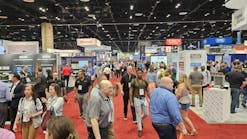The importance of clean air for human respiration was recognized even in ancient Rome. Vitruvius Pollio, the earliest architect whose written records are known to exist, said towns should be located “without marshes in the neighborhood, for when the morning breezes blow toward the town at sunrise, if they bring with them mists from marshes and, mingled with the mist, the poisonous breath of the creatures of the marshes to be wafted into the bodies of the inhabitants, they will make the site unhealthy.”1
During the Industrial Revolution, many physicians believed heavily polluted outside air was responsible for myriad chronic conditions. And as recently as the early 20th century, “pernicious night air” was believed to be harmful to the ill, particularly children, leading to the closing of sick-room windows at night.
A general understanding of the need for adequate indoor ventilation can be assumed to date from the time when open fires for cooking and heating were moved indoors. Smoke from open hearths exited through cracks and holes in roofs; the use of chimneys did not become widespread until the 11th or 12th century. Those early flues apparently did not draft particularly well, as evidenced by the number of deaths by carbon-monoxide inhalation.
By 1866, ventilation technologies had progressed to the point that B.F. Sturtevant Co. was equipping the U.S. Capitol with ventilating fans. And in 1884, Dr. John S. Billings, U.S. deputy surgeon general, published “The Principles of Ventilation and Heating and Their Practical Application,”2 a comprehensive text providing standards and specifications for ventilating primarily large public buildings. Today, as we have for nearly 40 years, we rely on ANSI/ASHRAE Standard 62.1, Ventilation for Acceptable Indoor Air Quality, in ventilating commercial buildings.
REFERENCES
-
Pollio, M.V. (1914). Vitruvius: The ten books on architecture. (M.H. Morgan, Trans.). Cambridge: Harvard University Press.
-
Billings, J.S. (1889). The principles of ventilation and heating and their practical application (2nd ed.). New York: The Sanitary Engineer.








